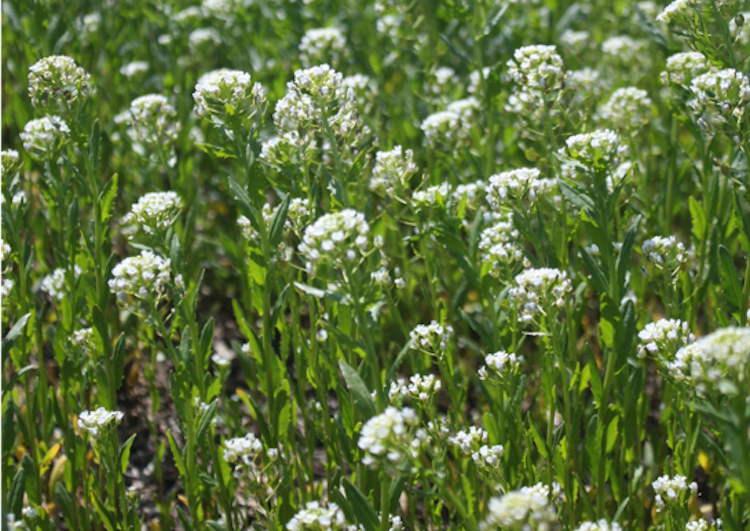By Sarah Moore, M. Scott Wells, Melissa Wilson, Russ Gesch, and Roger Becker - UMN
Double-cropping is a system of farming where a second crop is planted in the same field after the harvest of the first crop. The double-cropped system can increase ecological services as well as provide additional income to farmers by increasing the amount of living cover on the landscape, often accomplished by rotating a winter annual and a summer annual (Figure 1). In the upper Midwest, few winter annual crops reliably survive the harsh winters (e.g., cereal rye). However, researchers are developing an oilseed crop, pennycress, that can serve as a new winter annual for the region.

Figure 1. Pennycress double-crop systems contrasted by cover crop and non-cover crop systems.
Double-cropping can bring many benefits to a farm, but also comes with risks. Additional crops can increase input costs, and for farmers to adopt a practice, it must be economically fruitful. Also, the upper Midwest has a short growing season, and limitations on water and growing degree days (GDD) can reduce yields of one or both crops. So, can pennycress work economically and environmentally as a double-crop in this region? And if so, what summer annual crops can best fit in pennycress double-crop systems? Eight pennycress-summer annual cropping systems were evaluated for their net economic potential and success rate based on local climate data.
Summer annuals included soybean [maturity groups (MG) 0.2, 0.3, 0.7 and 1.4], dry bean, proso millet, teff, buckwheat, sorghum, hemp, and sweetcorn. Dry beans consistently had higher net income than a standard mono-cropped soybean. All other crops had a similar net income to mono-cropped soybean, except in 2018, when establishment issues and pest issues reduced yields for proso millet, teff, and hemp. However, sorghum never reached maturity before the first killing frost (28˚F), and MG 0.7 and MG 1.4 soybeans did not reach maturity in 2018, highlighting the need to quantify the risk associated with lack of GDD.
Hydrothermal time (GDD plus soil moisture) was calculated from pennycress harvest to the first killing frost for the past 30 years at Rosemount MN, Morris MN, Prosper ND, and Ames IA, and used as a benchmark for the summer annual double crops following pennycress harvest. Pennycress grain yield was lower than expected across the two growing seasons. Pennycress ('MN 106' and improved wildtype) seed shatter was the primary reason for reduced grain yields. After the initiation of this study, new reduced shattered pennycress lines entered advanced testing, and show great promise in lowering pennycress seed shatter.
Soybean success varied widely based on the maturity group used: MG 1.4 would have an 86% success rate in Ames, the southernmost location, while MG 0.2 would have a 14% success rate in Prosper, the northernmost site. Based on these findings, further evaluation of soybean MG is needed. Sweetcorn and buckwheat did reliably reach maturity at all four locations, while dry bean and proso millet did reliably reach maturity at all locations except Prosper, ND. However, both Prosper and Morris showed an increase in available GDD in the last 10-years compared to the previous 30, indicating that the climate is warming and potentially making this region more suitable for double-cropping.
Based on the results, dry beans, proso millet, buckwheat, and sweetcorn can currently be recommended as summer annuals to follow pennycress. However, further research is needed to optimize the profitability of these systems.







